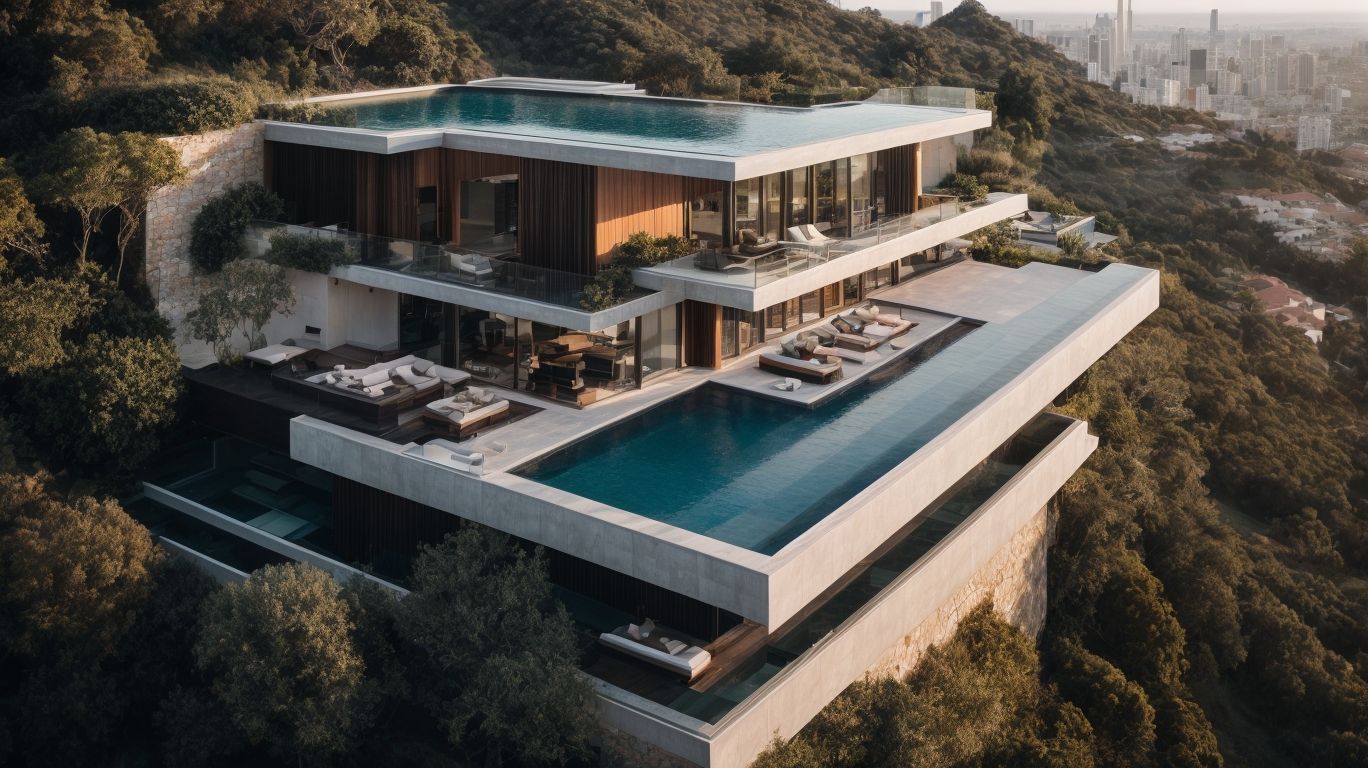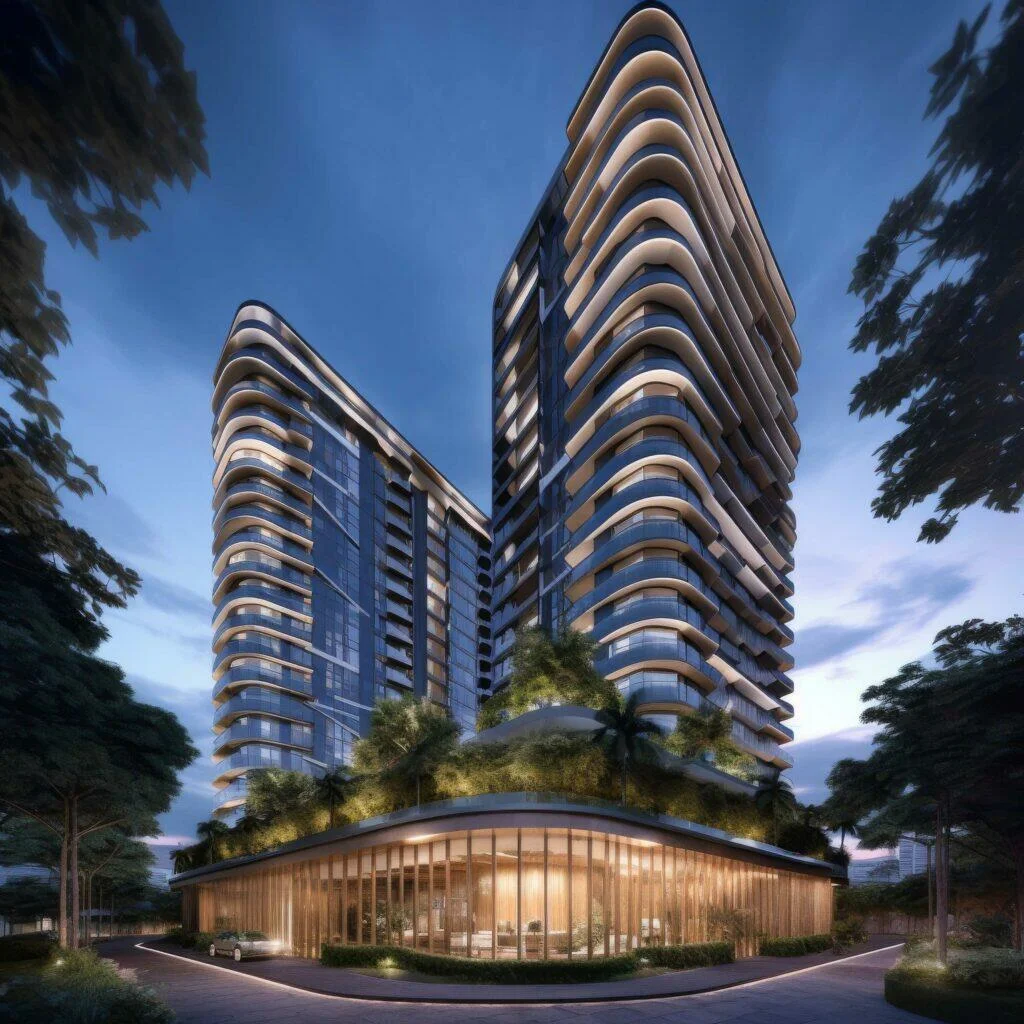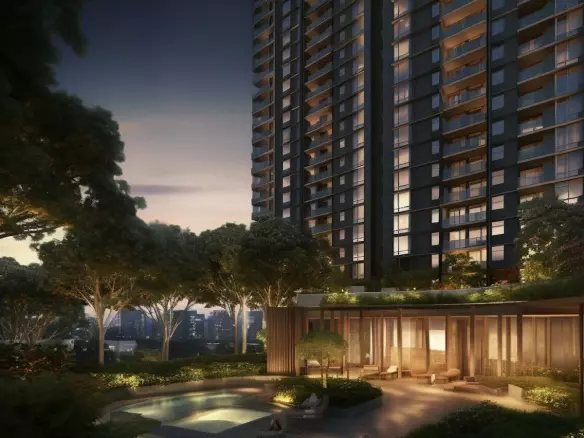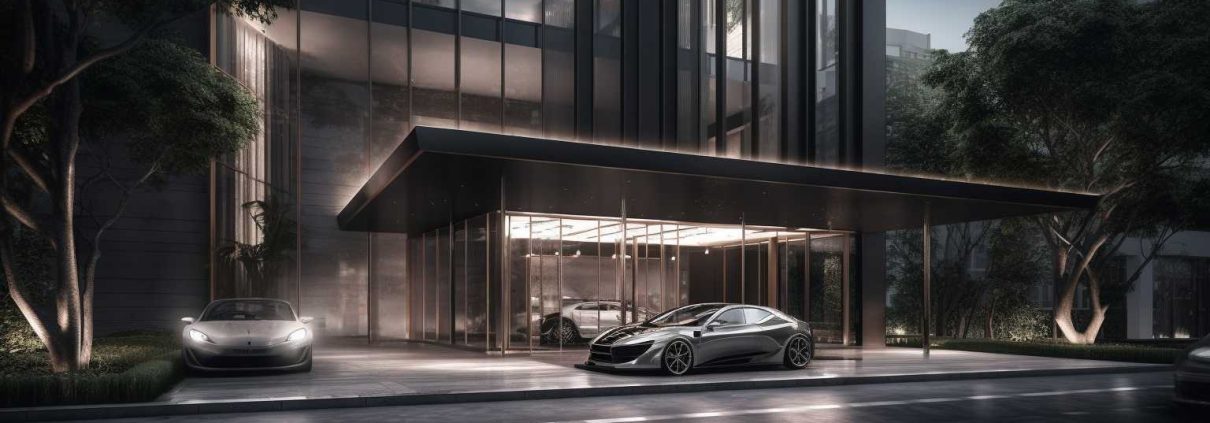
Welcome to the future of luxury living. As the world of high-end real estate continues to evolve, it brings with it exciting new trends and possibilities. In a market where extravagance is the norm, it can be overwhelming to keep up with the latest developments. But don’t worry, we’ve got you covered. Here’s what you need to know.
What Is High-End Real Estate?
What Is High-End Real Estate? High-end real estate refers to properties that are considered luxurious and exclusive, typically known for their prime location, unique design, and top-of-the-line amenities. These types of properties are often owned by individuals with a high net worth and offer a level of luxury and sophistication that sets them apart from average real estate options. High-end real estate can include luxury homes, penthouses, mansions, and upscale condominiums. The market for high-end real estate is driven by the demand from affluent individuals seeking prestigious properties that provide comfort, privacy, and a high standard of living.
What Are the Key Factors Driving the Growth of High-End Real Estate?
The high-end real estate market has been experiencing significant growth in recent years, with no signs of slowing down. So, what are the key factors driving this upward trend? In this section, we will explore the main drivers of growth in the high-end real estate sector. From the increasing demand from high net worth individuals to the current low interest rates and favorable market conditions, and the growing popularity of luxury properties as investments, we will discuss the key elements contributing to the expansion of the high-end real estate market.
1. Increasing Demand from High Net Worth Individuals
There has been a notable rise in the demand for high-end real estate among high net worth individuals.
- Location Research: Identify affluent neighborhoods and cities that attract high net worth individuals.
- Market Analysis: Study market trends, property appreciation rates, and investment potential.
- Property Features: Consider luxury amenities, unique architecture, and high-quality finishes.
- Networking: Connect with real estate agents, developers, and industry professionals who specialize in high-end properties.
- Financial Planning: Determine the budget and financing options for purchasing high-end real estate.
When investing in high-end real estate, it is crucial to thoroughly research and seek expert advice to make informed decisions.
2. Low Interest Rates and Favorable Market Conditions
Low interest rates and favorable market conditions are two major factors driving the growth of high-end real estate. Here are the steps to understand their impact:
- Low interest rates: With low borrowing costs, high-net-worth individuals can secure mortgages at more affordable rates, making luxury property purchases more attractive.
- Favorable market conditions: A strong economy, stable housing market, and positive investor sentiment contribute to the growth of high-end real estate. This creates a favorable environment for luxury property sales and investments.
3. Growing Popularity of Luxury Properties as Investments
The increasing demand for luxury properties as investments can be attributed to various factors. Firstly, individuals with high net worth are turning to luxury properties as a means of diversifying their portfolios and preserving their wealth. Additionally, with low interest rates and favorable market conditions, luxury properties are becoming an appealing investment option. Furthermore, these properties have the potential to yield high returns and appreciate in value over time.
Some emerging trends in this market include:
- A focus on sustainability and eco-friendliness
- Incorporation of smart home technology
- A desire for unique and experiential living spaces
What Are the Emerging Trends in High-End Real Estate?
The world of high-end real estate is constantly evolving, with new trends emerging in response to changing preferences and lifestyles. In this section, we will discuss the emerging trends in this exclusive market and how they are reshaping the landscape of luxury living. From a growing emphasis on sustainability and eco-friendly properties to the integration of cutting-edge smart home technology, we will explore the latest developments that are shaping the future of high-end real estate. Additionally, we will delve into the demand for unique and experiential living spaces, as well as the increasing focus on wellness and health amenities in luxury properties.
1. Shift towards Sustainable and Eco-Friendly Properties
The high-end real estate market is currently undergoing a significant shift towards sustainable and eco-friendly properties. Buyers are now placing a higher priority on environmentally conscious features and sustainable building practices. To adapt to this trend, developers and sellers can take the following steps:
- Incorporate renewable energy sources such as solar panels or geothermal heating and cooling systems.
- Utilize eco-friendly materials in construction, such as recycled or locally sourced materials.
- Implement energy-efficient designs, including proper insulation, windows, and appliances.
- Create green spaces and landscaping that support biodiversity and reduce water consumption.
- Install smart home technology for energy management and consumption monitoring.
2. Integration of Smart Home Technology
Integrating smart home technology is a key trend in the high-end real estate market. To achieve this, follow these steps:
- Start with a central hub: Install a smart home hub that acts as a control center for all connected devices.
- Upgrade security: Install smart security systems that include smart locks, cameras, and motion sensors for enhanced safety.
- Create a connected environment: Integrate smart thermostats, lighting, and window coverings to control and automate the home’s energy usage.
- Implement voice control: Connect smart speakers or virtual assistants to enable voice commands for various tasks.
- Enhance entertainment: Install smart TVs, sound systems, and streaming devices for a seamless entertainment experience.
With these steps, homeowners can enjoy the convenience and efficiency that comes with integrating smart home technology.
3. Focus on Wellness and Health Amenities
In the high-end real estate market, there is a growing trend towards prioritizing wellness and health amenities. This is in response to the increasing demand for properties that promote a healthy lifestyle and well-being.
- Integrate state-of-the-art fitness centers and gyms to encourage physical activity and exercise.
- Incorporate spa facilities, including saunas, steam rooms, and massage rooms, for relaxation and rejuvenation.
- Create outdoor spaces such as gardens, walking paths, and yoga decks to foster a stronger connection with nature.
- Include wellness-focused features like meditation rooms, mindfulness spaces, and wellness libraries.
- Install advanced air and water purification systems to improve indoor air quality and provide clean drinking water.
4. Demand for Unique and Experiential Living Spaces
The high-end real estate market is seeing a significant trend towards the demand for unique and experiential living spaces. Wealthy buyers are no longer satisfied with just a place to live, but are seeking homes that offer extraordinary features, amenities, and experiences. These can include private movie theaters, indoor swimming pools, rooftop gardens, and even private helipads. These one-of-a-kind living spaces provide a sense of exclusivity and luxury that traditional homes cannot match. This trend is driven by the desire for a distinctive lifestyle and the status that comes with owning such a property. It showcases the high priority that high-end buyers place on customization and unparalleled living experiences.
A recent example of this demand is a couple in Los Angeles who purchased a modern mansion featuring a state-of-the-art home theater, a wine cellar, and a personal art gallery to display their extensive art collection. The couple was drawn to the uniqueness of the property and the opportunity to showcase their personal style and passions. This story highlights the growing demand for distinctive living spaces and the willingness of high-net-worth individuals to invest in properties that offer a truly exceptional living experience.
What Are the Most Sought-After Locations for High-End Real Estate?
As the luxury real estate market continues to thrive, buyers and investors are seeking out the most desirable locations to invest in high-end properties. In this section, we will discuss the top destinations that are currently in high demand for high-end real estate. From bustling cities with strong economies to popular vacation spots and emerging markets with potential for growth, we will explore the factors that make these locations so sought-after in the luxury real estate market.
1. Major Cities with Strong Economies
Major cities with robust economies are highly desirable locations for investing in high-end real estate. These cities offer a combination of economic stability, business opportunities, and a high standard of living. If you are considering investing in high-end real estate in major cities with strong economies, here are some steps to follow:
- Research: Conduct thorough research on the city’s economic indicators, growth potential, and real estate market trends.
- Location: Choose neighborhoods within the city that have a proven track record of appreciation and high demand.
- Infrastructure: Evaluate the quality of infrastructure, including transportation networks, schools, hospitals, and amenities.
- Economic Diversity: Look for cities with a diverse range of industries to ensure stability and reduce dependence on a single sector.
- Market Demand: Analyze the demand for high-end properties in the city, taking into account factors such as population growth and foreign investment.
Investing in high-end real estate in major cities with strong economies can offer long-term growth potential and attractive returns on investment.
2. Popular Vacation Destinations
The high-end real estate market is constantly seeking popular vacation destinations. These sought-after locations offer luxury properties in desirable areas that attract affluent buyers. Examples of popular vacation destinations for high-end real estate include tropical paradises such as the Maldives or Bora Bora, glamorous cities like Monaco or Dubai, and exclusive ski resorts like Aspen or Courchevel. These destinations not only provide stunning surroundings and top-notch amenities, but also the opportunity for a luxurious lifestyle and potential for high returns on investment.
If you are considering investing in high-end real estate for vacation purposes, these destinations should definitely be at the top of your list.
In addition, other fantastic vacation destinations include the French Riviera, the Hamptons, and the Amalfi Coast. These locations offer breathtaking natural beauty, world-class entertainment, and a vibrant cultural scene. Whether you prefer beachfront properties, mountain retreats, or lively city living, these popular vacation destinations have a variety of options to choose from. Investing in high-end real estate in these locations can provide not only a luxurious vacation retreat, but also a profitable investment opportunity.
3. Emerging Markets with Potential for Growth
To identify emerging markets with the potential for growth in high-end real estate, follow these steps:
- Research: Conduct a thorough analysis of global real estate trends and economic indicators to identify regions experiencing rapid growth and development.
- Evaluate Market Conditions: Assess factors such as population growth, GDP growth, political stability, and infrastructure development to determine the attractiveness of a market for high-end real estate investments.
- Local Regulations: Understand the legal and regulatory framework of each market, including foreign ownership restrictions and tax implications for investors.
- Market Demand: Examine the demand for luxury properties in each market, including factors such as rising incomes, increased urbanization, and the presence of affluent individuals or companies.
- Future Potential: Consider long-term factors like planned infrastructure projects, urban redevelopment initiatives, and government policies that support economic growth and real estate development.
By following these steps, investors can identify emerging markets with the potential for growth in high-end real estate and make informed investment decisions.
What Are the Challenges Facing the High-End Real Estate Market?
As the real estate market continues to evolve, the luxury segment is facing unique challenges. In this section, we will discuss the current landscape of high-end real estate and the obstacles that are being encountered by this market. From economic uncertainty and market volatility to increasing competition and changing buyer preferences, we will examine the various factors that are shaping the high-end real estate industry and how they are impacting buyers, sellers, and agents.
1. Economic Uncertainty and Market Volatility
Economic uncertainty and market volatility pose significant challenges for the high-end real estate market. These factors can greatly impact property values, buyer confidence, and investment decisions. Fluctuations in the stock market, geopolitical tensions, and changes in government policies can all contribute to economic uncertainty and market volatility. High-end buyers are particularly sensitive to these factors, as their investments involve larger sums of money. To effectively navigate these challenges, it is crucial for buyers and investors to carefully analyze market conditions, stay informed about economic trends, and seek guidance and insights from experienced professionals.
2. Increasing Competition and Oversupply in Some Markets
The high-end real estate market is facing challenges due to an increase in competition and oversupply in certain markets. This is driven by factors such as urbanization, globalization, and the availability of financing options. With more luxury properties being developed, the market becomes saturated, resulting in a surplus of available properties. This oversupply puts pressure on developers and sellers to offer competitive pricing and attractive incentives to attract buyers. It also creates a more discerning buyer base as they have a wider range of options to choose from. To stay ahead in this competitive market, developers must focus on unique features, exceptional quality, and standout amenities to differentiate their properties.
In recent years, cities like New York and London have experienced a surge in high-end real estate development, resulting in a saturation of luxury properties. This has led to increased competition among developers, pushing them to offer more unique and innovative designs to stand out. Additionally, oversupply in these markets has put downward pressure on prices, making it a favorable time for buyers seeking high-end properties. However, other emerging markets, such as Dubai and Hong Kong, continue to see strong demand for luxury real estate, presenting new opportunities for developers and investors.
3. Changing Demographics and Preferences of High-End Buyers
The high-end real estate market is being shaped by the changing demographics and preferences of high-end buyers. In order to cater to these evolving needs, developers and sellers must adapt their strategies. Here are some steps to consider:
- Research and analyze the target demographic to understand their preferences, lifestyle, and buying behavior.
- Customize properties and amenities to align with the changing preferences, such as incorporating eco-friendly features, smart home technology, wellness facilities, and unique living experiences.
- Offer flexible and personalized options, like customization opportunities, concierge services, and tailored financing options, in order to cater to the changing demographics and preferences of high-end buyers.
- Market the properties through targeted advertising and partnerships with luxury brands to attract high-end buyers who are looking for specific features and amenities.
- Stay updated on the latest trends and emerging preferences in high-end real estate to ensure continued relevance and competitiveness in the market.






